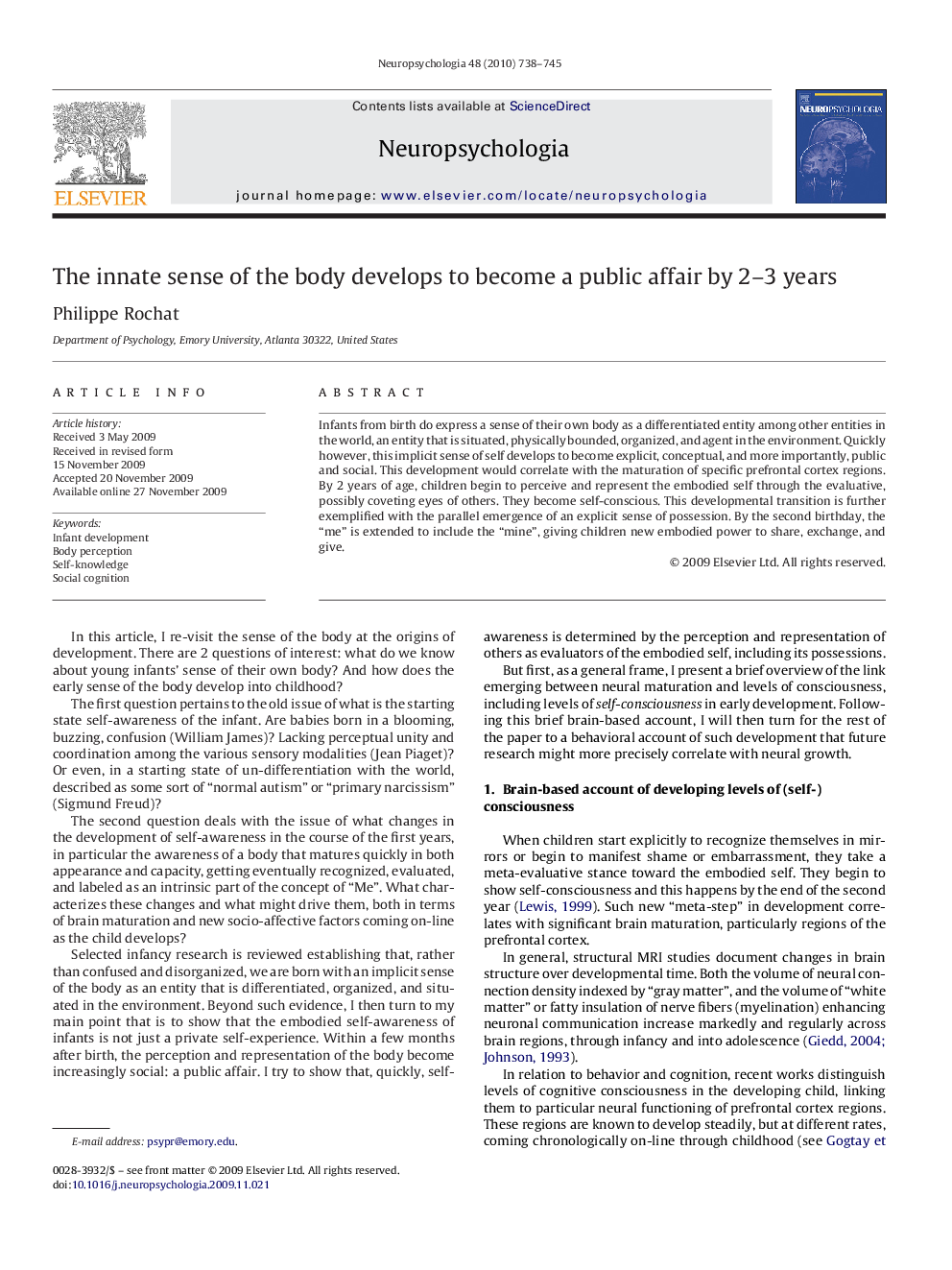| Article ID | Journal | Published Year | Pages | File Type |
|---|---|---|---|---|
| 945127 | Neuropsychologia | 2010 | 8 Pages |
Infants from birth do express a sense of their own body as a differentiated entity among other entities in the world, an entity that is situated, physically bounded, organized, and agent in the environment. Quickly however, this implicit sense of self develops to become explicit, conceptual, and more importantly, public and social. This development would correlate with the maturation of specific prefrontal cortex regions. By 2 years of age, children begin to perceive and represent the embodied self through the evaluative, possibly coveting eyes of others. They become self-conscious. This developmental transition is further exemplified with the parallel emergence of an explicit sense of possession. By the second birthday, the “me” is extended to include the “mine”, giving children new embodied power to share, exchange, and give.
